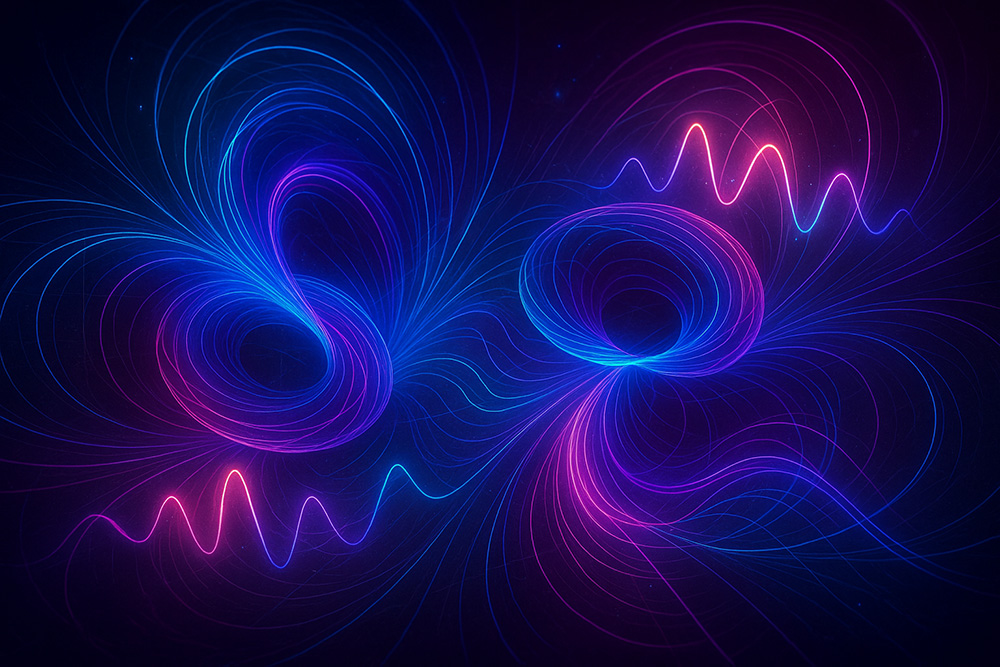In recent years, scientists have become fascinated by Kitaev interactions, mysterious quantum behaviors that promise revolutionary advancements in quantum technologies. A recent study by physicists from the University of North Florida and Los Alamos National Laboratory offers compelling new insights into these exotic interactions within small, precisely controlled magnetic clusters, potentially unlocking the door to a new era of quantum materials and technologies.
The research, led by graduate student E. M. Wilson and his advisor, Jason T. Haraldsen, explores quantum clusters composed of fundamental magnetic moments, or spins, arranged in distinct and intriguing geometries such as trimers (three spins), tetramers (four spins), and tetrahedrons (four spins arranged as a pyramid). By employing a sophisticated combined Heisenberg-Kitaev Hamiltonian, the team revealed exact energy states and unique thermodynamic behaviors resulting from the interplay between conventional magnetic interactions and the more exotic, bond-directional Kitaev interactions.
One of the most significant discoveries of the study is the emergence of a second “Schottky anomaly” in heat capacity measurements, an unmistakable signature that could serve experimentalists hunting for Kitaev interactions in real-world materials. Typically, a Schottky anomaly is a single distinct peak in heat capacity, signaling energy level transitions in magnetic systems. However, in these quantum clusters, the presence of Kitaev interactions generates a striking additional anomaly at high interaction strengths.
Furthermore, the team unveiled complex nonlinear energy-level behaviors in response to magnetic fields, akin to exotic phenomena observed in larger-scale quantum systems. These findings suggest that even small spin clusters exhibit captivating quantum phase transitions, sudden but fundamental rearrangements in their magnetic states, marking them as ideal experimental playgrounds to investigate previously elusive quantum behaviors.
Beyond their theoretical implications, these discoveries open thrilling possibilities for creating novel materials such as exotic molecular magnets and “Kitaev molecules.” These futuristic materials could offer unprecedented control over quantum states, potentially leading to groundbreaking advances in quantum computing and secure quantum communications.
Crucially, the researchers outline clear, experimentally accessible signatures that scientists can detect using sophisticated tools like inelastic neutron scattering and magnetic heat capacity measurements. Confirming these signatures experimentally could provide definitive evidence of Kitaev interactions, propelling research into quantum spin liquids and Majorana fermions. Majorana fermions, in particular, hold immense promise for quantum computing, as exemplified by recent breakthroughs such as Google’s Majorana quantum chip, a cutting-edge technology that aims to create more stable and fault-tolerant quantum bits (qubits).
This study bridges theory and experiment, providing a tantalizing glimpse of the quantum future by enabling researchers to detect, manipulate, and exploit exotic quantum behaviors previously confined to theory. Reflecting on the implications of the study, Wilson stated, “These results highlight how small quantum clusters can serve as ideal models to unlock the mysteries of exotic magnetic interactions, pushing us closer to realizing practical quantum technologies.” As scientists continue their quest to understand materials such as α-RuCl₃ and iridates, the pioneering work of Wilson and Haraldsen offers invaluable guidance toward realizing these extraordinary quantum states and interactions in real materials.
The paper is currently under peer review; however, a preprint is available at https://www.arxiv.org/abs/2506.06967.
By Larry Winters
References:
Microsoft Quantum Team. (2025, February 19). Microsoft unveils Majorana 1: The world’s first quantum processor powered by topological qubits. Microsoft Azure. https://azure.microsoft.com/en-us/blog/quantum/2025/02/19/microsoft-unveils-majorana-1-the-worlds-first-quantum-processor-powered-by-topological-qubits/
Oak Ridge National Laboratory. (2017). Neutrons zero in on the elusive magnetic Majorana fermion. Neutron Sciences. https://neutrons.ornl.gov/content/neutrons-zero-elusive-magnetic-majorana-fermion
SciTechDaily. (2025, March 31). The exotic particle that might finally make quantum computers reliable. https://scitechdaily.com/the-exotic-particle-that-might-finally-make-quantum-computers-reliable/






